
You may be familiar with mason jars for their common use in canning. John Landis Mason designed this specific style of jar, which bears his name, in 1858. He designed it as a way to preserve foods without allowing bacteria to destroy the contents. This is still a common use of mason jars, but you can use them in other creative ways as well. You can, for example, bake bread or small cakes in mason jars. You can then consume them immediately or seal the jars and save the baked goods for later.
Preheat your oven to 325 degrees (unless your recipe dictates another temperature).
Place the jars and their corresponding lids and rings into a large pot. Fill the pot with water to cover the jars, then bring to a boil. Boil the jars, lids and rings for at least 10 minutes. This step is only necessary if you intend to seal the jars and save the baked products for later use; if you will consume them immediately, simply wash the jars, lids and rings with soap and hot water.
Grease the entire inside of each mason jar with butter or oil, then sprinkle flour inside to form a thin coating over the inside of the jar. Gently shake out any excess flour. This will help the finished product slide out of the jar more easily.
Pour the batter into the mason jars, filling each jar approximately ½ to 2/3 full.
Place the jars on a cookie sheet and put them into your preheated oven. Bake until they are done, probably 35 to 45 minutes. You can test for doneness by inserting a toothpick into the center of the baked batter then pulling it out. If it comes out clean, the bread or cake is done. If not, return it to the oven and check every five minutes until it is done.
Remove the jars from the oven. Place the lid on each jar, then screw it on with the ring. Allow the jars to cool. This should create an airtight seal, which you can test by pushing on the top of each lid. If the top is already inverted and does not give under pressure, the jar is sealed. If the top is raised slightly and gives under pressure, the jar is not properly sealed. Consume the contents of any improperly sealed jars immediately, as they will not keep. Skip this step if you are not canning the jars for long-term storage.
Related Articles

How to Pre-Bake Puff Pastry
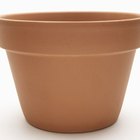
How to Bake Bread in a Clay Pot

How to Freeze Croissants
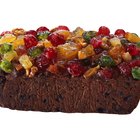
Instructions for Baking Fruit Cake in ...

How to Keep Cream Puffs From Deflating

How to Freeze Brioche

How to Adjust the Oven Temperature for ...
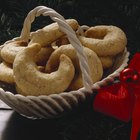
Can Crescent Rolls Expire?
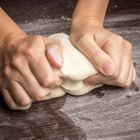
How to Bake Bread in Stoneware

How to Can Pork Tenderloin in Half Pint ...
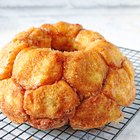
Make Ahead Monkey Bread Recipe

How to Store and Freeze Sundried ...
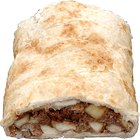
How to Freeze Stromboli

Why Do Canning Jars Pop While Cooling?
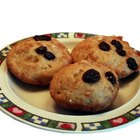
Roshco Silicone Bakeware Instructions

Can I Make Doughnuts From Frozen Yeast ...
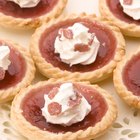
How to Make Mini Tart Shells
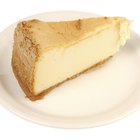
How to Cook Cheesecake in a Cupcake Pan

How to Make Cannolis by Baking

How Are Funyuns Made?
References
Resources
Tips
- Only use wide-mouth jars for this project. Otherwise it will be difficult or impossible to get the product out of the jar intact.
- Slip a knife between the jar and the finished product if you cannot get the cake or bread out of the jar easily. Slice all the way around the baked product to separate it from the jar.
Warnings
- Be careful and use oven mitts when handling hot jars.
Writer Bio
Morgan O'Connor has been writing professionally since 2005. Her experience includes articles on various aspects of the health-insurance industry for health-care newsletters distributed to hospitals as well as articles on both international and domestic travel.
Photo Credits
Jupiterimages/Photos.com/Getty Images